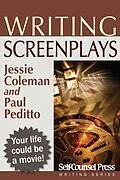Autorentext
Self-Counsel Press is the premier source for self-help law books and books for small business. All of our legal titles are written by lawyers who practise in the field they are writing about. Our business books are written by experts on the topic. People who have "been there, done that" in the businesses they write about, and know how to clearly and simply describe what they have learned. We are proud to have been the pioneer publisher of self-help law titles in North America when we launched our first Divorce Guide in 1971.
Inhalt
Introduction ix l Finding Your Story 1 1. Story Ideas to Get You Started 4 1.1 School days 5 1.2 Children 5 1.3 A nimals 6 1.4 Family traditions, religious experiences, and vacations 6 1.5 Siblings 7 1.6 Love and heartbreak 8 1.7 Employment 8 1.8 Parents 9 1.9 Dirty secrets 9 1.10 Health and wellness 9 1.11 U ndying aspirations 10 1.12 A ccomplishments and overcoming obstacles 10 1.13 Marriage and divorce 11 1.14 Life's crossroads 12 2. Choosing the Right Moment for Your Story 12 2.1 Logline 13 2 Creating Memorable Characters 17 1. Creating Intriguing Characters 20 2. Character Identification 23 3. Character Biographies 23 3 Planning Your Story 29 1. The Three-Act Structure 32 2. Bullet-Point Scene Descriptions 33 3. U sing the Index Card Method 33 4. Flesh out the Story 33 iv Writing screenplays 4 Writing Your Screenplay 37 1. Establish a Writing Schedule 40 2. Tips for Writing Scenes 43 2.1 Story setup 44 2.2 Get in late, get out early 44 2.3 Scene setup and payoff 45 2.4 U se present tense action verbs 45 2.5 Creative descriptions 45 3. Elements Necessary for Constructing a Scene 46 3.1 Slugline (scene heading) 46 3.2 A ction 47 3.3 Character description 47 3.4 Dialogue 48 3.5 Parenthetical 49 3.6 Transition 50 4. Title of Your Screenplay 50 5. Title Page 50 6. Type of Scripts 51 7. The Importance of the Screenplay Format 51 8. Resources for Screenwriting Programs and Published Screenplays 53 8.1 Screenwriting software 53 8.2 Published screenplays 54 5 Revising Your Screenplay 55 1. The Revision Process 58 6 Script Draft Review and Feedback 61 7 Selling Your Story 67 1. Copyright 69 2. The Difference between Optioning and Selling Your Script 70 3. How to Sell Your Story 71 Contents v 3.1 Strategy l: Connect with the people you know in the industry 71 3.2 Strategy 2: Write a query letter 72 3.2a Research the market 73 3.2b List of agents, managers, and production companies 75 3.3 Strategy 3: Enter screenplay competitions 76 3.4 Strategy 4: Work for, intern, or volunteer for an industry professional 78 3.5 Strategy 5: Hire an agent 79 3.6 Strategy 6: Hire an entertainment attorney 80 3.7 Strategy 7: Attend a class 81 3.8 Strategy 8: Attend pitch seminars 81 3.9 Strategy 9: Self-publish your screenplay 82 4. Summarize Your Screenplay 82 4.1 Logline and synopsis 82 4.2 Screenplay treatment 82 Appendix 89 Resources 183 Worksheets 1 Your Story: Approach 1 14 2 Your Story: Approach 2 15 3 Mini Character Sketch 25 4 Detailed Character Biography 26 Samples 1 Differences between a Script and a Book 41 2 Title Page 51 3 Query Letter 74 4 Logline and Synopsis: Skin Deep 83 5 Logline and Synopsis: The l6th Minute 83 6 Screenplay Treatment 85
